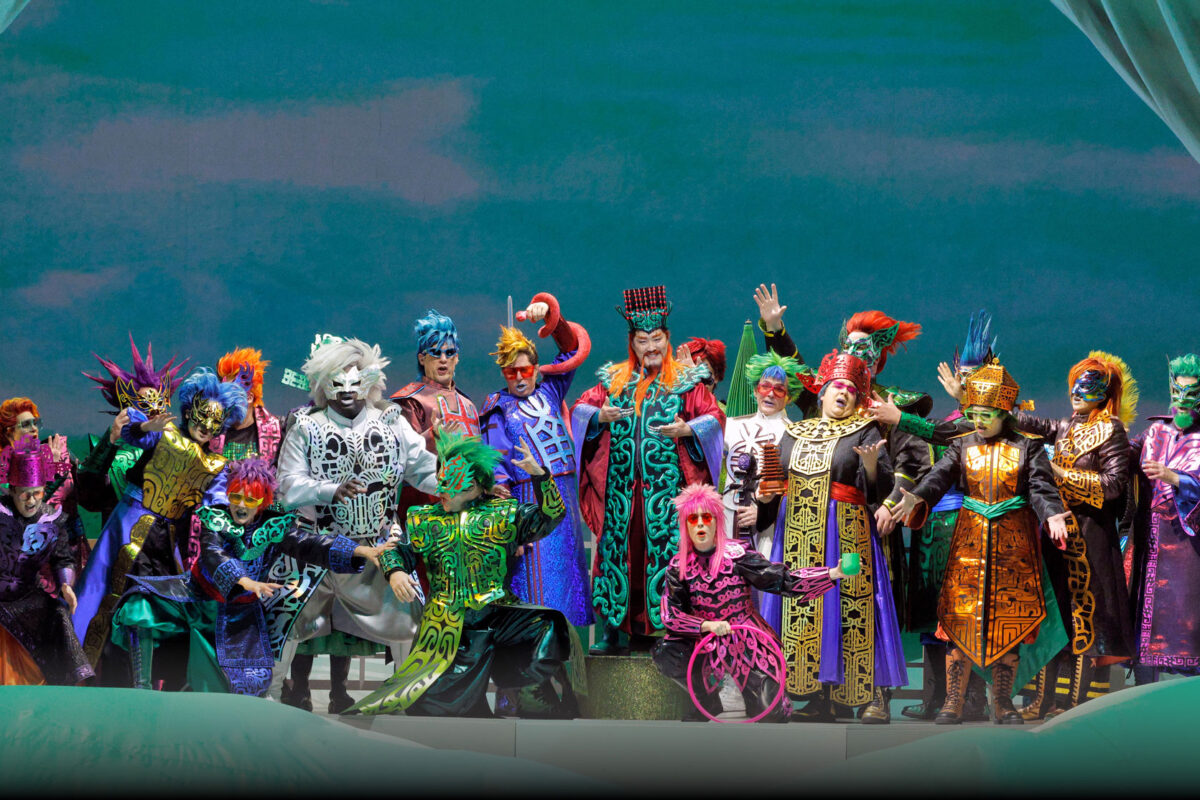How billions of dollars of fresh tracks, tunnels, and monorail could change the face of the city for good
Words by STEVE SANDERS
Illustration by ADOLFO CORREA
Picture it: a balmy evening on July 14, 2028. An astonishing 70,000 people packed into the LA Memorial Coliseum roar to a crescendo as the Olympic cauldron is lit, kicking off a month of competitions that will play out across the greater Los Angeles area — along with a peppering of events further afield in the state. Millions of people will flood into Southern California for the Olympics and Paralympic Games, a mammoth event that will be “the equivalent of seven Super Bowls every day for 30 days,” according to Casey Wasserman, the sports superagent and chairman of Chairman LA 2028. And all this activity in a city known for its soul-crushing gridlock, creaking infrastructure, and crisis-level population of unhoused people. What could possibly go wrong?
Although 2028 sounds far away, the city is working to prepare the ground for what it has pledged will be a “car-free” affair. That means huge upgrades and extensions to the Metro System, an influx of almost 3,000 buses to shuttle people from event to event in special bus lanes, and dramatically expanded airport capacity to handle the masses.
The Olympic legacy for host cities is, at best, mixed. Athens, which hosted the 2004 Games, notoriously lost billions of dollars and was left with an array of fetid unused pools, weed-strewn stadiums, and crumbling infrastructure it had frantically erected for the Games. Decay set in almost as soon as the torch was extinguished and the world turned away its attention.
The Olympics will be the equivalent of seven Super Bowls every day for 30 days

Los Angeles is far better positioned, not least because it will have had more than a decade to prepare. The International Olympic Committee broke with history in 2017 when it named Paris as the winner of the 2024 Games, but awarded the subsequent Olympics and Paralympics to Los Angeles at the same time. What’s more, virtually all the venues in Los Angeles are already built, meaning the tricky question of what to do with newly constructed stadiums after the Games is not a concern. The Intuit Dome, future home of the Los Angeles Clippers, will open this summer and is set to serve as the primary basketball venue. Sofi Stadium, home of the NFL’s Rams and Chargers, will host parts of the opening and closing ceremonies, along with the Coliseum. Gymnastics will be based at the Kia Forum, the Honda Center in Anaheim will host volleyball, and soccer will mostly be at BMO Stadium, home of LAFC and the Rose Bowl.
That said, the city has its work cut out, mostly remaking how people move around. Last year Angelenos lost, on average, close to four days — 90 hours, the second-highest rate in the U.S. — sitting in rush-hour traffic. The Metropolitan Transportation Authority has laid out an ambitious “Vision 2028” plan to double the use of transport options other than solo driving in the next four years. This includes ramping up mass transit ridership, walking, biking, ride-sharing, and carpooling. A critical piece of the puzzle is the $9.5 billion extension of the Metro purple D line from Wilshire/Western through Beverly Hills, Century City, UCLA, and Westwood, as well as another new line to connect to LAX. The latter is slated to open as soon as fall of this year.
The purple line, which has been plagued by hundreds of millions in cost overruns, hit a huge milestone in April when it finished tunneling work for the 9-mile, seven-station extension. Mayor Karen Bass said, “This safe completion of tunneling through this part of Los Angeles is a milestone in Metro’s work to expand fast and reliable public transit across the region.”
The Metro, however, is still working against the clock. The line will open stations in 3-mile chunks, with the last — Westwood/UCLA and Westwood/VA Hospital — set to open in 2027, months before the Games. The latter is critical because UCLA will provide housing for virtually all the athletes and coaches. International media will stay at USC’s student housing. The city will also rent an extra 5,000 buses that, theoretically, will bypass the worst of the traffic via special bus lanes.
A dramatic overhaul of the city’s primary airport is also steaming ahead. The $15 billion megaproject includes a six-stop, 2.25-mile people-mover rail loop that connects the main terminal areas with the Metro, a new $1.5 billion car rental depot, and buses and other local transit options. In addition, four of the nine existing terminals have been renovated, or are in the process, at a combined cost of $4 billion. A $400 million addition to a new terminal — opened in 2022 behind the Tom Bradley International Terminal — is under construction. Taken together, it is “the largest public works program in the history of the city of Los Angeles,” declared Beatrice Hsu, interim chief executive of Los Angeles World Airports.
The sheer volume and complexity of L.A.’s preparations are head-spinning. LA28’s Wasserman has said, however, that the most stressful period is yet to come. LA 2028, the nonprofit organization charged with delivering the games, has secured all the funding and commercial deals required to meet the $6.8 billion budget for holding the Games. That figure is above and beyond the aforementioned publicly funded upgrades to transportation infrastructure.
Yet 85% of that cash pile will not be spent until the last 18 months before the Games on last-minute touches, like installing a temporary running track in the Coliseum and training tens of thousands of volunteers. In other words, there is little wiggle room for delays or cost overruns.
The goal, however, is to use the Games to catalyze lasting improvements for Los Angeles; to be, in a way, the anti-Athens. And there is precedent. The 1984 Games yielded a $233 million surplus, much of which was used to fund the LA84 Foundation, an organization that built youth sports programs and facilities across the city. It continues to operate today.
The 2028 Games will be far larger, with more events, more venues, and more visitors. So although the risks are higher, so too is the prize. Wasserman said recently: “The real legacy is the economic legacy. If we can create a surplus, that surplus stays to benefit the city forever. When you have an event of this size and this scale, it is a great line in the sand to get the city motivated and focused on being at its best when the world comes here.”
This story originally appeared in the Summer 2024 issue of C Magazine.
Discover more CULTURE news.
See the story in our digital edition




